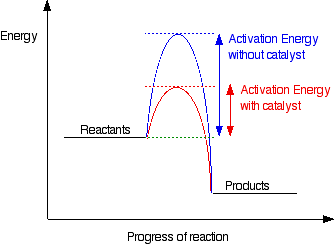
If you consider the graphs we often use to represent these processes, a catalyst lowers the peak of the activation energy (Ea). However, the initial and final energy values of the curve remain unchanged.

7A.7 Express the units for rate constants when the concentrations are in moles per liter and time is in seconds for (a) zeroth-order reactions; (b) first-order reactions; (c) second-order reactions.
Calculate the change in entropy of a block of copper at 25ºC that absorbs 65J of energy from a heater.
Which bond has more ionic character, C–F or C–Br? Why?
C-F (look at electronegativity difference)